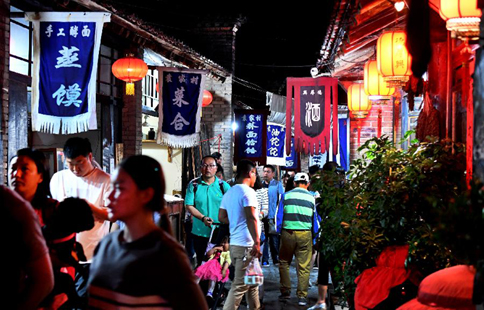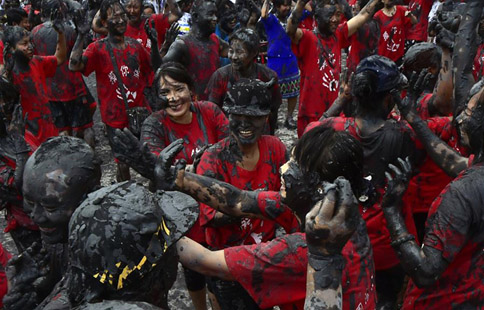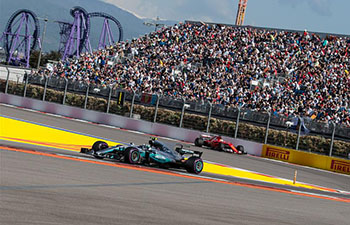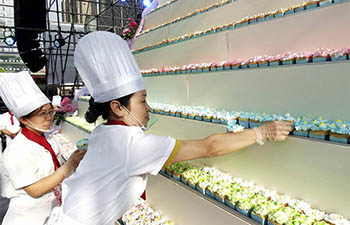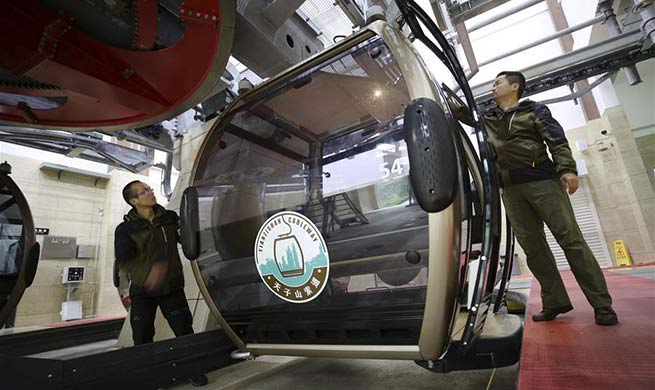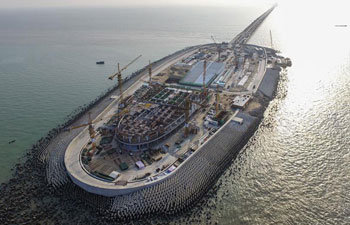by Fatima AbdulKarim
HEBRON, May 1 (Xinhua) -- Hebron, a West Bank city famous for ceramics making and officially named the World Crafts City by the UNESCO, is pushing the ancient traditional craft to modernity.
There are many ceramic factories in Hebron. And one of the oldest was established in 1968, by a school teacher whose passion to handicrafts led him to research this kind of work from 1962, until he established the first workshop al-Tamimi over there.
His son, Nader Tamimi, told Xinhua in a recent interview that Al-Tamimi Ceramics is the first ceramics company in Hebron, after which many workshops, studios and factories were established."
Nader Tamimi, who is now running the company, took correspondent on a tour in the factory that has grown to become a two-part workshop where traditional ceramic is made with a modern touch.
"This company means a lot to me since it was established by my father, who was originally an academic school principal, and from the school he launched, just when he found an oven and some ceramics material," he added.
Today, electricity and modern tools allow mass production, but not without the hands of skilled workers.
Tamimi explained that the ceramics are made in a two-stage process called the two-fire system. The phase one includes molding the shapes and turning them solid enough for the second phase.
The factory owner walked us to the first workshop, where the molds are made and baked, as he describes "we use the mixer to mix clay with water and some substances, to make a slip that is poured into the molding caskets. It takes some 15 or 20 minutes to become solid, depending on the weather."
Two workers were able to make dozens of pieces; they let them dry and then put them in the oven and compress them to create the "biscuit" mold.
"After the first 1,000 degrees centigrade burn, the piece becomes firm and ready to be sent to the main factory where it's designed, colored and glazed before taken to the second fire with the same temperature," explained Tamimi as he walked out of the first workshop to the second.
At phase two, more workers are doing the design on the pieces, and coloring with special dyes. After dried, each piece is dipped in liquid glazing once, and then burnt for the last time before it is packaged.
The 65-year-old manager explained that the process seems simple, but it needs very particular material.
He goes on explaining, "The colors we use are all mineral colors made up of oxidants and each of them makes a specific color."
This process lives for thousands of years, making its products highly reliable.
Many know Hebron through its merchants and products, as it represents almost a third of the gross domestic products of Palestine, which come from marble quarries and its agriculture based on grapes, lime and figs, in addition to handicrafts of glassblowing, pottery and ceramics.
Tamimi shared his thoughts with Xinhua on the Belt and Road Initiative, expressing optimism for reviving the ancient Silk Road.
He said "we would try to invest in the opportunity of the Silk Road for Palestinian manufacturing and heritage and we hope to be engaged in this initiative and see its benefits, because for sure it will."





